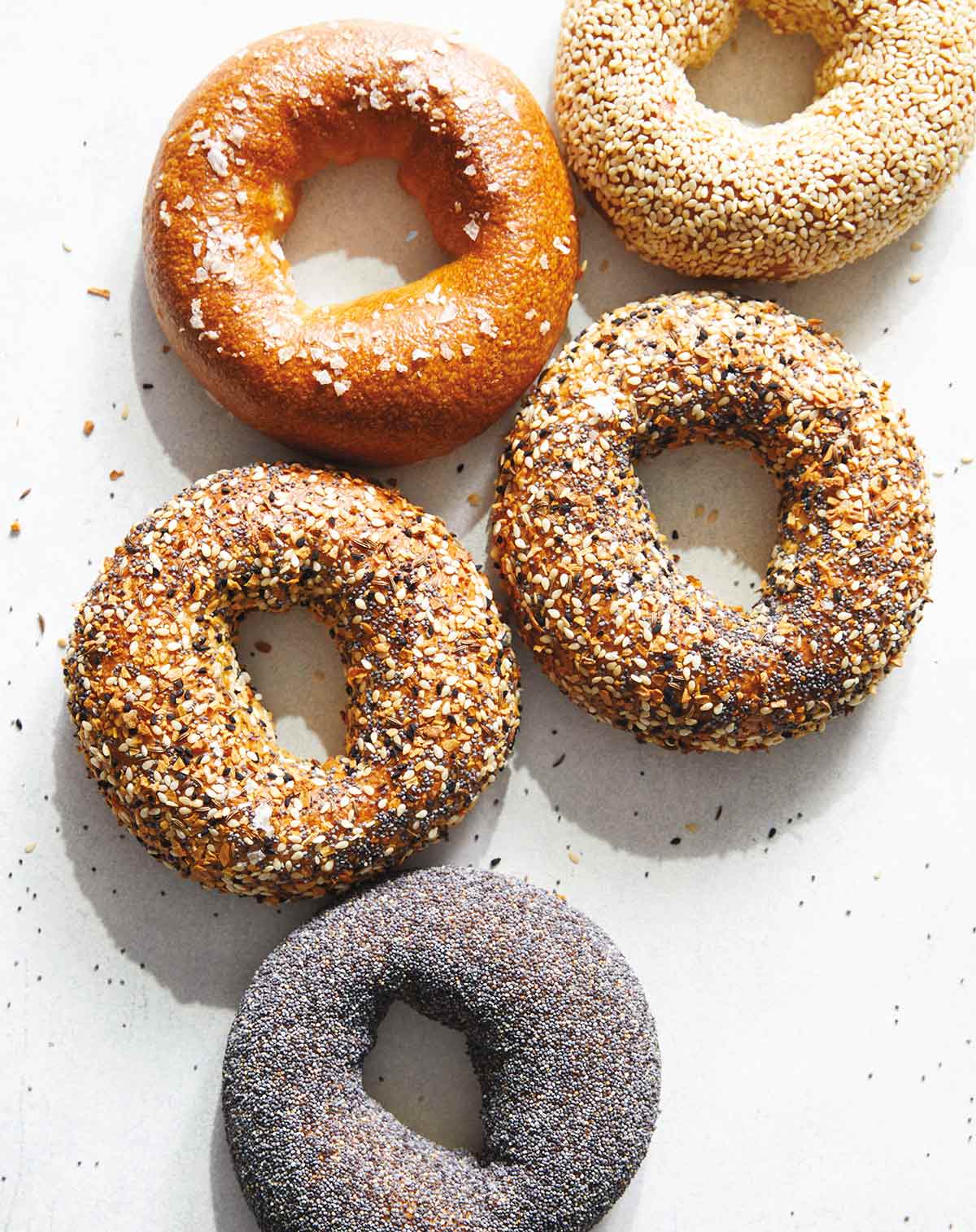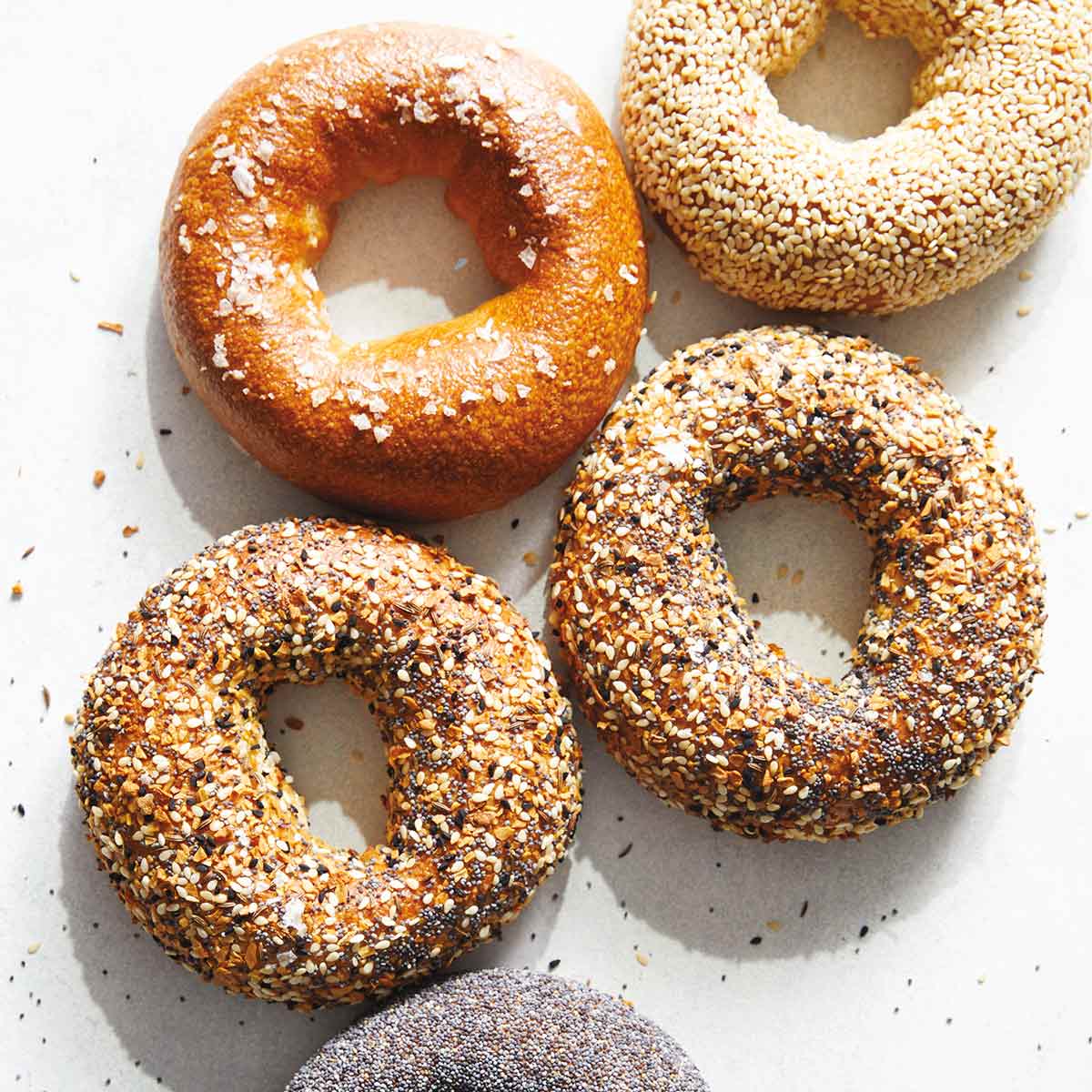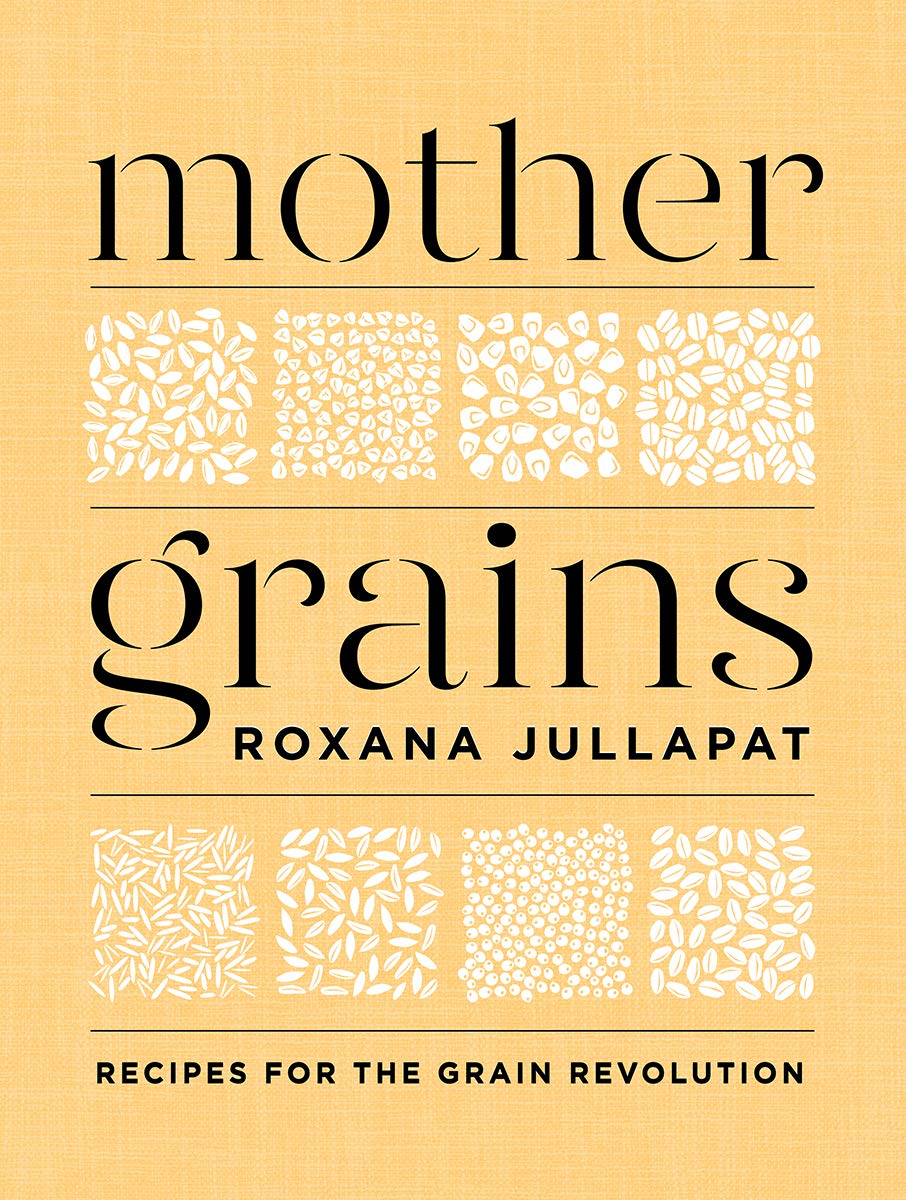Rye Bagels
Posted by admin on
Rye bagels are a rewarding (and darn delicious) way to start baking things other than bread. Roxana Jullapat walks you through the how and why of the process. Our testers loved how easy and satisfying they are, we think you will too.

Adapted from Roxana Jullapat | Mother Grains | W.W. Norton, 2021
What makes a good bagel is the subject of a perennial debate. New Yorkers claim their tap water is the reason you can find a real bagel only in their city, but it takes only a basic understanding of bread making to know that a decent bagel can be made anywhere. These chewy round rolls with a shiny exterior and a hole in the center usually achieve their characteristic chewiness with bread flour, which is high in gluten. Kneading the dough sufficiently also builds a strong structure, capable of remaining tight after proofing, poaching, and baking. As for the shiny crust, you must simmer the bagels in malted water for a few seconds on both sides before baking.
If good bagels require high-gluten flour, why even consider using rye? Rye flour is infamously low in gluten and high in starch. Breads made entirely from rye flour are prone to collapsing because they lack sufficient strength to hold their shape. But when paired with the right amount of high-gluten flour, rye makes a gorgeous bagel with a rustic exterior and a desirably dense crumb that remains chewy and flavorful.
If you’ve made bread before, you’re ready for bagels. If you haven’t, read the directions carefully, so you can anticipate the dough’s various stages. Always opt for dark rye flour, which is whole grain and contains the most bran. To prepare the dough, you’ll have to make a rye sponge a few hours in advance. Nutritious rye yields a very active sponge and shouldn’t be allowed to ferment for more than the indicated time. The final dough should be firm. Rather than rolling ropes and connecting them to form a loop, I use an unorthodox yet fun shaping method: roll each dough portion into a tight ball, then poke a hole in the center with your index finger and stretch from the inside out. The bagels are shaped the night before and allowed to rest overnight in the refrigerator. As tempting as it is, don’t try to make this a one-day process; let the bagels have their sleep! This slow, cold rise is key to both texture and flavor. You can follow the suggested Prep and Baking Schedule to make the recipe just in time to have bagels ready for breakfast in the morning.
These days you can buy artisan everything toppings in specialty shops, but I recommend making your own. To really highlight the oniony flavor that everything topping is known for, the recipe calls for more onion flakes than the other ingredients. But you can play with the amounts in favor of your favorite component.
Bagels are best eaten the day they’re baked, but leftovers keep for another day stored in a paper bag at room temperature. I always suggest toasting the day-old bagels, though. Rye bagels are delicious schmeared with the timeless duo of cream cheese and lox. If you’re looking for alternative serving ideas, try homemade jam and ricotta or labneh, sumac, and avocado. There’s really no wrong topping for a bagel.–Roxana Jullapat
Rye Bagels

Ingredients
For the rye sponge
- 1/2 cup dark rye flour
- 1/4 teaspoon fine sea salt
- 1/8 teaspoon instant yeast
- 1/3 cup cold (65° to 70°F | 18° to 21°C) water
For the dough
- 2/3 cup lukewarm (98º to 105ºF | 37° to 41°C) water
- 1 teaspoon instant yeast
- 2 cups bread flour, plus extra for dusting
- 3/4 cup whole wheat flour
- 3 tablespoons whole milk
- 1 tablespoon plus 1 1/2 teaspoons granulated sugar
- 1 1/2 teaspoons fine sea salt
- 1 teaspoon barley malt syrup*
- Nonstick baking spray
For the topping
- 1 1/2 teaspoons caraway seeds
- 1 1/2 teaspoons nigella seeds
- 1 1/2 teaspoons poppy seeds
- 1 tablespoon plus 1 1/2 teaspoons sesame seeds
- 3 tablespoons onion flakes
- 1/4 cup barley malt syrup
Directions
Prep Day
Make the sponge
- In a small bowl, stir the flour, salt, yeast, and cold water together and mix with a wooden spoon or rubber spatula until well combined, about 30 seconds. The water temperature is important to ensure that the sponge rises at a slower rate; warmer water can cause the sponge to ferment too quickly, impacting the flavor of the bagels. Cover tightly with plastic wrap or a kitchen towel and ferment at room temperature for 4 hours.
Make the dough
- When the sponge is ready, you can make the dough. Pour the lukewarm water into a bowl and sprinkle the yeast over it. Stir and set aside to activate for 5 minutes. Be sure to use the correct temperature water; any hotter and the yeast can deteriorate.
- In a stand mixer fitted with the dough hook attachment, combine the dissolved yeast mixture, rye sponge, flours, milk, sugar, salt, and barley malt syrup. Mix on low speed for 2 minutes just to combine. Increase the speed to medium and mix until the dough feels firm and bouncy, about 2 minutes.
- Place the dough on a lightly floured surface and knead briefly to shape into a smooth ball. Place the dough in a bowl lightly coated with nonstick spray, cover tightly with plastic wrap, and let rest at room temperature for 20 minutes so the gluten can relax.
- Coat a rimmed baking sheet with nonstick spray. Cut the dough into six equal pieces, about 4 1/2 ounces (125 g) each. Shape each piece into a tight ball. With your index finger, poke a hole in the middle of the ball to create a hollow center. Stretch the hole until it measures 1 to 1 1/2 inches (25 to 38 mm) in diameter.
- Move the shaped bagels to the prepared sheet, making sure they’re spaced at least 2 inches (5 cm) apart. Cover with plastic wrap and refrigerate overnight. The bagels will be ready to poach the next day.
Baking Day
- Remove the bagels from the refrigerator and let them sit, uncovered, at room temperature for 1 hour.
- Place an oven rack in the middle position and preheat the oven to 400ºF (204°C). Coat a rimmed baking sheet with nonstick spray.
Make the topping
- In a small bowl, combine the caraway seeds, nigella seeds, poppy seeds, sesame seeds, and onion flakes.
- To poach the bagels, bring a medium saucepan of water to a boil. Lower the heat until the water is at a simmer and stir in the barley malt syrup. The barley malt will help the exterior of the bagels brown while giving them an attractive sheen.
- Working in batches of 2 or 3 bagels at a time, use a spider or slotted spoon to carefully lower each bagel into the water. Poach for 30 seconds, flip with the spider or slotted spoon, and poach for 30 seconds more. Use the spider or slotted spoon to transfer the poached bagels to the prepared baking sheet, spaced 2 inches (5 cm) apart, with the “prettier” side up. Sprinkle each bagel immediately with 1 tablespoon topping. Repeat with the remaining bagels.
- Bake the bagels for 15 minutes. Then rotate the baking sheet and bake until the bagels are golden brown, 5 to 10 minutes more. Rotating the sheet halfway through the baking process will ensure that the bagels color evenly. Cool on a wire rack for 1 hour before serving.
Notes
*What is barley malt syrup?
One of the ingredients that make bagels bagelly (yeah, you heard us) is barley malt syrup. It gives bagels their shiny, golden crust and that specific malty flavor we all know and love. Barley malt comes from the sprouted grain barley, and the sprouting gives it a distinctive flavor. It's used extensively in beer making. A grain syrup and food sweetener, it's used in some baking applications but bagels rely on it. You won't need much but do try to get your hands on it if you can. If not, honey or molasses can be substituted but you won't get the malted flavor.Show Nutrition
Originally published May 19, 2021

